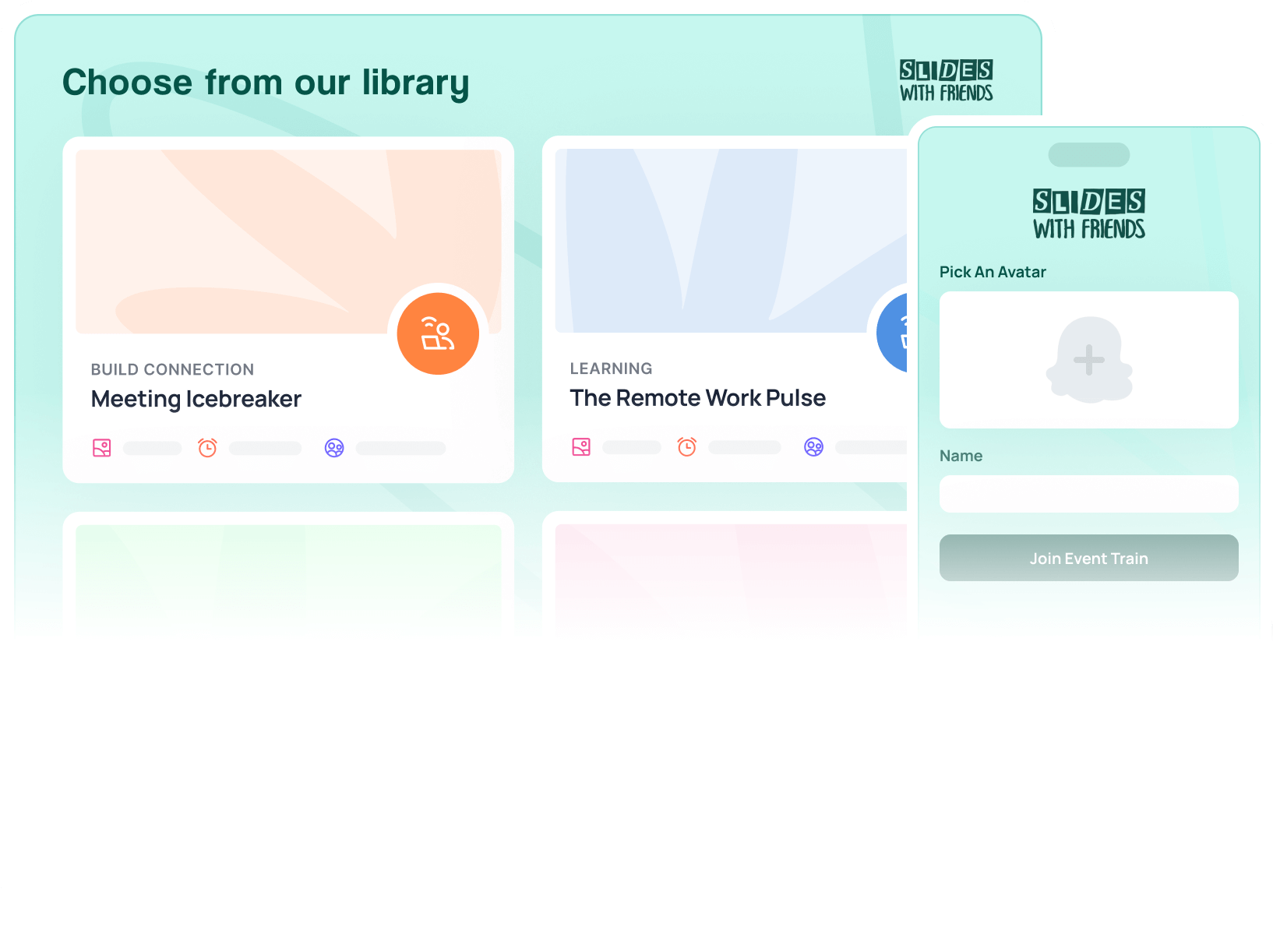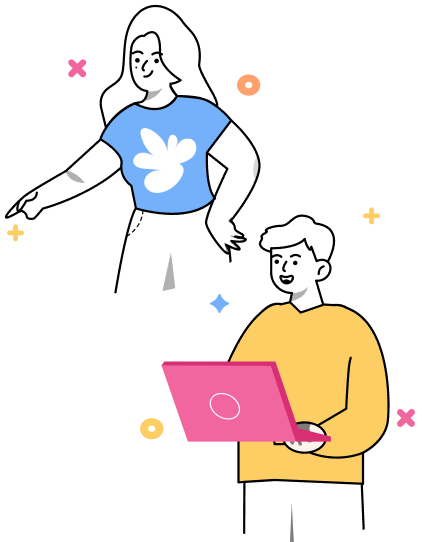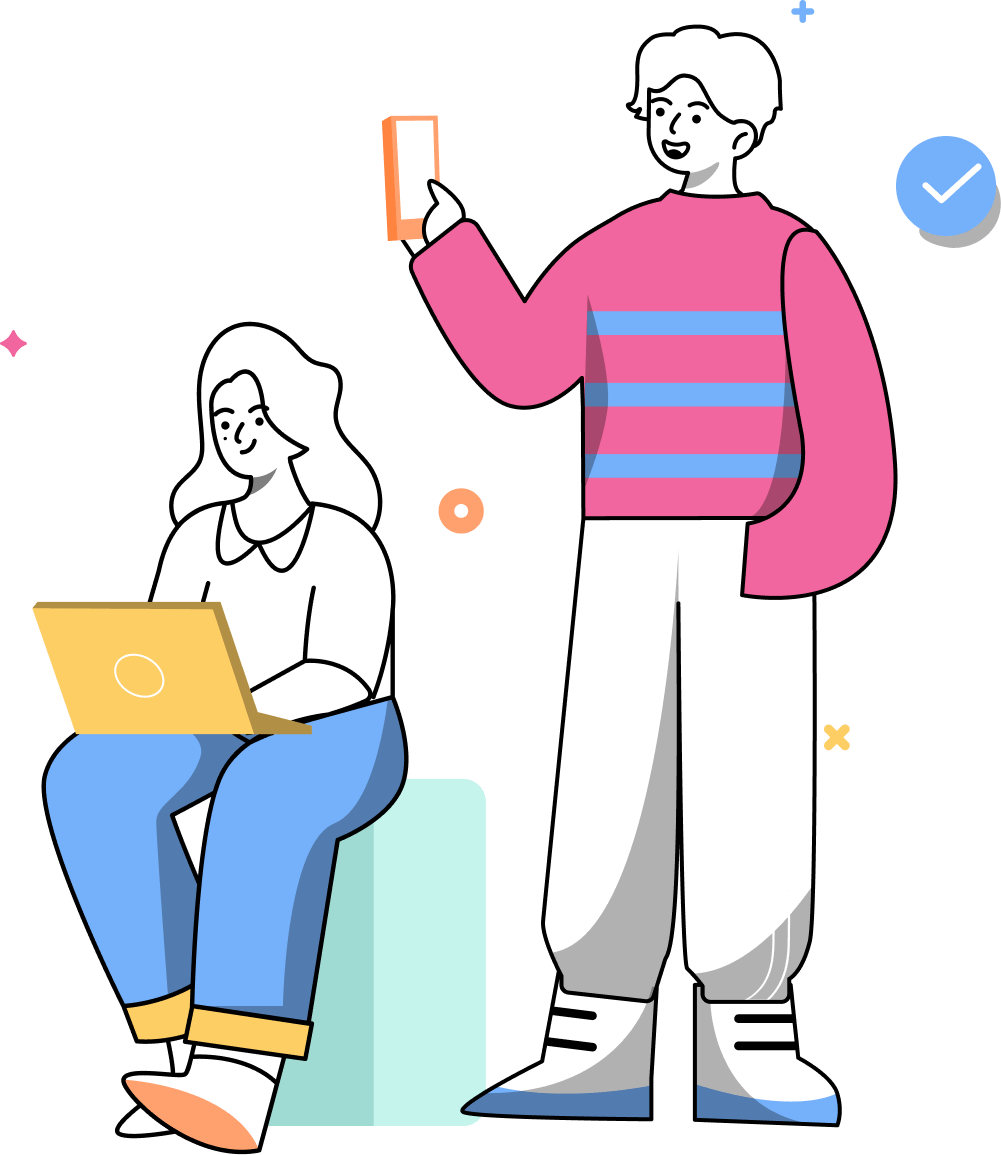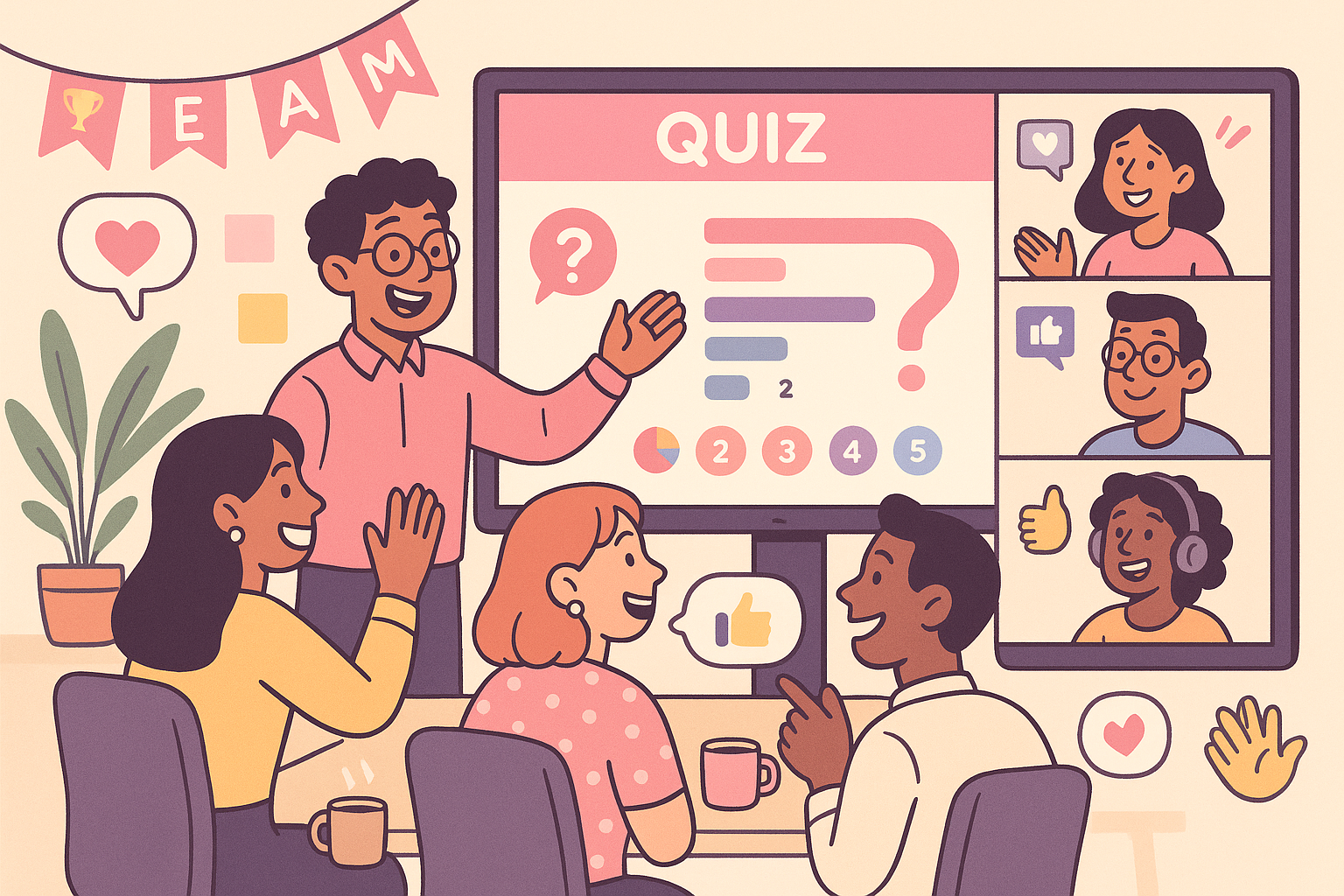The 9 Best Ways to Track Employee Attendance
Boost productivity and anticipate absenteeism pattern by tracking employee attendance. Read this article to learn what are the 9 best tools for the job.
%20(1).webp)
Life happens, emergencies arise, and sometimes people don't show up to work—that's normal. But when employees skip too many days, it becomes a serious issue. Excessive absenteeism can cause bottlenecks in your company's productivity.
Circadian's report "Absenteeism — The bottom line killer" reports that unscheduled absenteeism is a chronic problem for U.S. employers, conservatively costing
$3,600 per hourly employee per year, and $2,650 per salaried employee per year.
Why are employees skipping work? Obviously, people get sick sometimes. But often, absenteeism is more than a couple days with a fever.
Franz Kafka expressed the issue eloquently: _When I tried to get out of bed today I simply collapsed. There's a very simple reason for it, I am completely overworked._
While overworking might not always be the problem, frequent absences indicate something is wrong. Catching patterns of absenteeism early allows you to investigate and address the underlying causes of repeated no-shows.
That's why employee attendance tracking is so valuable. The software tracks who shows up for work and analyzes the schedules of those who don't. If someone starts missing too many days, the software alerts managers, who can then investigate the issue.
The market offers plenty of solutions for tracking employee attendance. Some are packed with features and let you customize everything; such programs are more suited to bigger companies with the resources to implement complex software. Others focus on supporting smaller businesses by offering a simpler solution.
We built our list with this breadth of needs in mind. It's up to you to assess your business' needs and pick the solution that best fits them.
Let's dive into the list.
Slides With Friends
Slides With Friends is our interactive presentation tool that can double as attendance tracking system.
Say you were running a training on project management tools. With Slides With Friends, you can easily track attendance by creating an interactive presentation. Start by generating an event and sharing the URL or QR code with your team. As participants join, their names get logged, giving you an attendance list.
But the platform's soul lives in its presentation tools. Host a live quiz on the PM tools you discussed, and use the data to analyze your training session. Did people pay attention? Was the presenter engaging? Was the material clear? With these data points, you can create better training in the future. And, obviously, you can see at a glance who joined the event, and who skipped it.
Software solutions can feel daunting at times. We've all struggled to maneuver a program to make it do our biddings. But with Slides With Friends, it's as easy as dragging-and-dropping the elements you want in our editor. All you need is a device with internet-connectivity capabilities.
Slides With Friends best fits on companies looking to track attendance to training sessions and workshops. If what you need is a more systematic approach, look into another item on this list.
When I Work
When I Work is an employee scheduling and time tracking software.
Its scheduling tools for creating and sharing employee work schedules separate it from similar apps. As do its shift planning features, that allow for easy shift swaps, requests, and notifications.
But When I Work can also fulfill a more traditional time tracking role. The software lets employees clock in and out of work through their mobile devices. And the app generates timesheets based off the gathered data that let you spot potential absenteeism patterns.
Among When I Work's most interesting integrations we find:
- QuickBooks — For seamless payroll processing.
- Gusto — To manage HR and payroll functions.
- Square — For integrated time tracking and payments.
- Zapier — Connecting with many apps to automate workflows.
- ADP — For comprehensive payroll and HR solutions.
When I Work's features make it particularly suited for companies in several industries. Retail businesses will find its shift management functions invaluable. The hospitality sector — where flexible scheduling is a necessity — will love those same features. In general, most small to medium businesses will find their administrative overhead lower as a result of adding When I Work to their workflow.
Time Doctor
Time Doctor brands itself as a workforce analytics platform.
Its main features that make it a robust staff attendance tracker include:
- Periodically capturing screenshot of users screens
- Tracking keyboard and mouse activity
- Recording website visited and applications used during work hours
- Sending alerts to users who are spending too much time on tasks not related to work
- The ability to create custom monitoring parameters
Additionally, the platform comes with in-depth analytics. These analytics allow you to see at a glance who is pulling their weight, and who is struggling to do so. Once aware of issues, you can act to fix them. Perhaps the employee needs more training, or is facing a challenging home environment. Whatever the case, learning about their struggle is the first step to devise a plan to help them go through said issues.
Time Doctor is a flexible solution that businesses of all sizes can use effectively. Small to medium businesses will enjoy the enhanced productivity and time management across teams it offers. Large enterprises will find Time Doctor's scalability and comprehensive reporting features useful. Some users, however, lamented the user interface's messiness when dealing with a large number of projects.
Connecteam
Connecteam is an all-in-one employee management solution.
The platform centralizes all aspects of employee attendance tracking — time monitoring, scheduling, tasks, and team chats.
Beyond the typical tracking features, the chat and announcement features are what separates it from its competitors.
Imagine you’re running a retail store. You can use the chat to quickly share updates or changes to schedules. If a shipment is delayed, send an announcement so everyone knows right away. This keeps the team informed and reduces confusion.
Connecteam is perfect for small to medium businesses needing an all-in-one management app. It’s great for field teams who need to track hours on the go, retail stores looking for easy scheduling and communication, and healthcare providers who manage shifts and tasks. Remote teams will also find its communication and task management features valuable, as they everyone in sync no matter where they are.
Clockify
Clockify is a complete time tracking app.
The platform specializes in tracking time spent on any activity. Here's a basic setup: create up a project/task, assign employees to it, and use the clocking in and out features to track their progress.
Analyze the reports Clockify generates to see how people are working on the task. Are they spending an appropriate amount of time on it? Are they skipping work days? Does there seem to be any bottleneck? And if so, where?
With these insights, you get a glance at your teams' productivity. All packaged into a simple and clear interface that doesn't take long to familiarize yourself with.
Clockify comes equipped with the ability to integrate with other software. Using Slack for internal communication? Clockify can log hours and manage time tracking directly from chat. Using QuickBooks for accounting and invoicing? Clockify can sync time data and calculate how much you owe to an employee based on time worked.
Versatility makes the platform a solid choice for a wide array of companies. Small businesses will love the ease of use; if you only need a basic time report, Clockify can do that. Enterprises will love the program's ability to handle a large number of users and extensive data.
Hubstaff
Hubstaff is a time tracking and productivity monitoring tool.
The app combines time tracking and project management features, making it a complete solution. You can assign tasks, set budgets, and track progress within the app. Specifically, the screenshots, activity levels, and app/URL tracking features let you monitor employee activity.
The detailed reports on productivity and time usage give managers full control over employees' schedules. A manager can instantly see if an employee is struggling to perform, and figure out what's not working. Perhaps the employee needs training, or they're stressed by outside events and need time to recover.
Its flexibility and richness of features makes Hubstaff a solid choice for all types of companies. It shines in field-work teams thanks to its geofencing capabilities and in companies that can devote resources to analyzing its detailed analytics.
Buddy Punch
Buddy Punch is a complete time tracking and scheduling solution.
The platform offers straightforward clock-in/clock-out functionality. This feature allows employees to log their hours in a few seconds. Its geolocation capability makes it a solid pick for remote and field teams. The scheduling tools make it easy to create, manage, and share work schedules. And automated overtime calculations help manage labor costs.
Buddy Punch offers a mobile app, enabling employees to punch in/out from anywhere.
The platform's integration with QuickBooks, Zapier, Xero, and Gusto make it fit into most workflows.
Buddy Punch is ideal for small to medium businesses needing efficient time tracking and scheduling. It's also a great fit for remote teams, field service teams, and retail businesses thanks to its tools to manage attendance and schedules.
Keka
Keka is a simple HR software that helps you manage your team.
It tracks time, processes payroll, manages leave, and keeps employee records. The interface is easy to use and gets the job done without fuss.
The platform offers five ways of clocking in:
- Biometric integration with its integration with over 200 biometric devices, including fingerprint scanners, facial recognition, and RFID
- GPS and mobile tracking via GPS and mobile devices
- Selfie attendance lets employees clock in by taking a selfie, which is then matched with their profile for authentication.
- Web clock-in for those without biometric devices
- Geofencing based on employee location\
Keka integrates with QuickBooks for smooth payroll, Gusto for HR and payroll tasks, Zapier to connect with many apps, Slack for team communication, and Xero for accounting needs.
Keka best fits small to medium businesses that need an all-in-one HR solution without having to devote too many resources to the task.
Everhour
Everhour is a versatile time tracking and project management tool designed to help teams manage their time efficiently. It offers features like clock-in/clock-out timers, manual time logging, and a visual dashboard to see all your time data at a glance. This makes tracking hours and productivity straightforward and intuitive.
EEverhour integrates with many popular project management tools. Which means you can see Everhour's tracking directly inside those applications. Examples of include Asana, Trello, Jira, ClickUp, Basecamp, GitHub, and Notion.
The platform provides powerful reporting features. You will be able to create detailed and customizable reports. For example, you can check employee attendance, track project budgets, and manage tasks all from within the same interface. These reports help you understand how your team spends time on various projects. You can then use these insights to identify areas for improvement.
You can also set up alerts to stay on top of deadlines and budgets, ensuring projects stay on track. This makes Everhour not just a time tracker, but a comprehensive tool for project management and productivity enhancement.
Everhour is perfect for small to medium businesses, especially those working across various locations.
Wrapping Up
Some businesses resist adding employee attendance tracking software to their workflow. They feel like it might be too invasive or complicated to implement. After all, what's so hard about tracking employee attendance manually?
It turns out it is quite hard. Manual tracking involves maintaining physical logs, inputting data into spreadsheets, checking paper timesheets, and constantly verifying the accuracy of the records. The process is time-consuming, prone to errors, and can easily overlook patterns of absenteeism.
That's what makes time tracking software an investment that every company should consider. These tools automate time tracking, reducing chances of human error and freeing up resources you can spend elsewhere. Let's say a manager at your company was spending 15 minutes every day checking attendance. Over a year, that's more than 60 hours spent just on tracking attendance manually. 60 hours they could have spent on more valuable tasks. Never mind the potential for errors and missing absenteeism patterns.
And, as you have seen, solutions abound on the market. Whether you're a tiny startup or a large enterprise, there's a time tracking tool tailored to your needs. Investing in the proper tool will empower your business to operate at its best, while letting you spot when an employee has unexpressed needs — leading to a more positive work environment and reduced employee turnover.


Ready to ditch the dull, and run team sessions that people will actually enjoy?
Get started with a Slides with Friends deck in no time. We’ve got all the interactive features you need in one easy-to-learn, easy-to-set-up tool.















